 Nuclear capability, self-sufficiency in food production, an array of indigenous satellites and missiles, an unmanned Moon missionIndias achievements in the scientific domain in recent years have been spectacular. But, according to the countrys best-known scientist A.P.J. Abdul Kalam and his close associate Y.S. Rajan, weve only just begun. In a century that many experts predict may belong to India, the realization of the vision of a better future for everyone will require a keen understanding of our needs and this can only be achieved by tailoring our research and innovations to the goal of national development.
Nuclear capability, self-sufficiency in food production, an array of indigenous satellites and missiles, an unmanned Moon missionIndias achievements in the scientific domain in recent years have been spectacular. But, according to the countrys best-known scientist A.P.J. Abdul Kalam and his close associate Y.S. Rajan, weve only just begun. In a century that many experts predict may belong to India, the realization of the vision of a better future for everyone will require a keen understanding of our needs and this can only be achieved by tailoring our research and innovations to the goal of national development.
In The Scientific Indian, the authors of the path-breaking India 2020: A Vision for the New Millennium return after ten years to the core areas of scientific advancement that are crucial today: space exploration, satellite technology, missile development, earth and ocean resources, the biosphere, food production, energy and water harvesting, health care and communications, to name a few. For each aspect, the authors provide the context of recent progress on the global platform as well as Indian breakthroughs, before outlining a pragmatic vision of technological development that will propel India to the forefront of the world in the decades to come.
The Scientific Indian will speak to every curious and adventurous mind, and especially to tomorrows scientists and technologists, encouraging us to dream big, and urging us to work hard to make our dreams come true.
Avul Pakir Jainulabdeen Abdul Kalam, b. 15 October 1931, is one of Indias most distinguished scientists. He was responsible for the development of ISROs launch vehicle programme, the development and operationalization of strategic missiles at DRDO, and building indigenous capability in critical technologies. As scientific adviser to the defence minister, he was one of the brains behind the Pokhran-II nuclear tests in 1998. As chairman of TIFAC, he guided a number of technology projects and missions; his document on Technology Vision 2020 was a blueprint to make India a developed country.
Dr Kalam was principal scientific adviser to the Government of India holding the rank of a cabinet minister from 1999 to 2001. He was awarded the Bharat Ratna in 1997. He became the eleventh President of India in 2002 and held office till 2007. His focus now is on transforming India into a developed nation by 2020. He has been involved in teaching and research and has taken up a mission to ignite young minds for national development.
He is the author of the best-selling books India 2020: A Vision for the New Millennium (with Y.S. Rajan) and Ignited Minds: Unleashing the Power within India, both published by Penguin.
Yagnaswami Sundara Rajan is a well-recognized authority on technology development, business management and society linkages. He held various positions of responsibility related to science and technology between 1988 and 2002, and has shaped key policies and implemented several successful R&D projects with industry participation. He is currently principal adviser, CII.

We constitute one-sixth of the worlds population, and at least two-thirds of the global population today is going through the same crises and turmoils. Food, energy, water, health care, education and employment potential are important requirements for people everywhere to live with prosperity. The world at large needs technological inputs in order to meet these needs. I am going to discuss with you my vision aimed at finding solutions to these requirements using science and technology.
Cover photo courtesy Getty Images / Cover design by Nitesh Mohanty
BY THE SAME AUTHORS
India 2020: A Vision for the New Millennium
THE SCIENTIFIC INDIAN
A Twenty-first Century Guide to the
World Around Us

A.P.J. ABDUL KALAM
and
Y.S. RAJAN

VIKING
Published by the Penguin Group
Penguin Books India Pvt. Ltd, 11 Community Centre, Panchsheel Park, New Delhi 110 017, India
Penguin Group (USA) Inc., 375 Hudson Street, New York, New York 10014, USA
Penguin Group (Canada), 90 Eglinton Avenue East, Suite 700, Toronto, Ontario, M4P 2Y3, Canada (a division of Pearson Penguin Canada Inc.)
Penguin Books Ltd, 80 Strand, London WC2R 0RL, England
Penguin Ireland, 25 St Stephens Green, Dublin 2, Ireland (a division of Penguin Books Ltd)
Penguin Group (Australia), 250 Camberwell Road, Camberwell, Victoria 3124, Australia (a division of Pearson Australia Group Pty Ltd)
Penguin Group (NZ), 67 Apollo Drive, Rosedale, North Shore 0632, New Zealand (a division of Pearson New Zealand Ltd)
Penguin Group (South Africa) (Pty) Ltd, 24 Sturdee Avenue, Rosebank, Johannesburg 2196, South Africa
Penguin Books Ltd, Registered Offices: 80 Strand, London WC2R 0RL, England
First published in Viking by Penguin Books India 2010
Copyright A.P.J. Abdul Kalam and Y.S. Rajan 2010
All rights reserved
ISBN: 978-06-7008-344-2
The views and opinions expressed in this e-book are the authors own and the facts are as reported by them, and the publishers are not in any way liable for the same.
This digital edition published in 2011.
e-ISBN: 978-81-8475-246-5
This e-book is sold subject to the condition that it shall not, by way of trade or otherwise, be lent, resold, hired out, or otherwise circulated without the publishers prior written consent in any form of binding or cover other than that in which it is published and without a similar condition including this condition being imposed on the subsequent purchaser and without limiting the rights under copyright reserved above, no part of this publication may be reproduced, stored in or introduced into a retrieval system, or transmitted in any form or by any means (electronic, mechanical, photocopying, recording or otherwise), without the prior written permission of both the copyright owner and the above-mentioned publisher of this e-book.
This book is dedicated to all those who are curious about nature and
life and bold enough to seek new knowledge and
endure the rigorous methods of science
CONTENTS
ACKNOWLEDGEMENTS
This book is the product of a lifelong process of learning, which still continues. The authors would like to thank the various sourcesbooks, journals, other media and individuals, too numerous to listthat they have drawn on and been inspired by.
Y.S. Rajan in particular would like to thank the authors, publishers and institutes whose books, publications and websites have been mentioned in various chapters.
In addition, Y.S. Rajan would like to express his loving gratitude to his wife Gomati, who has given him support in his intellectual meanderings for over four decades, and to his second son Dr Vikram Rajan for critically evaluating many of his approaches and insights. He would also like to thank the Confederation of Indian Industries (CII) for providing him the necessary environment for his creative pursuits over the past five years, and Suraj Anandan who typed up the handwritten manuscript patiently but quickly, and made some interesting observations as well.

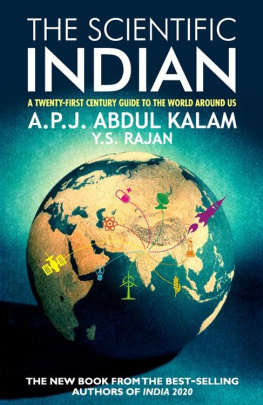

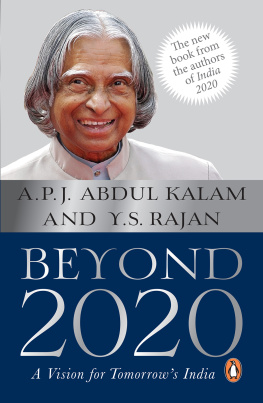
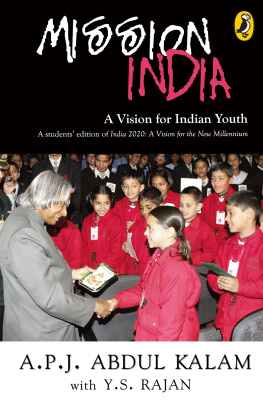
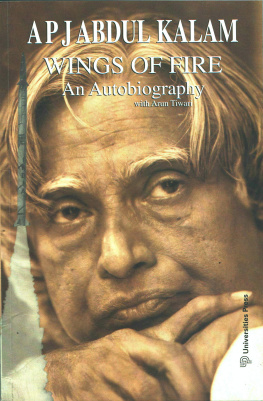
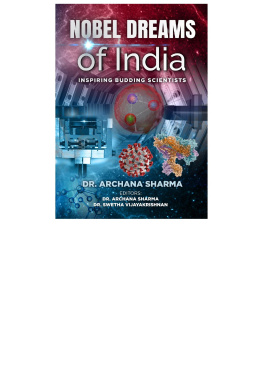
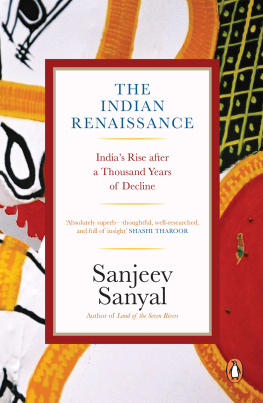
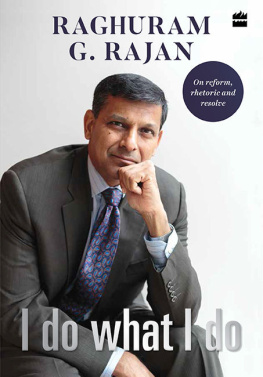

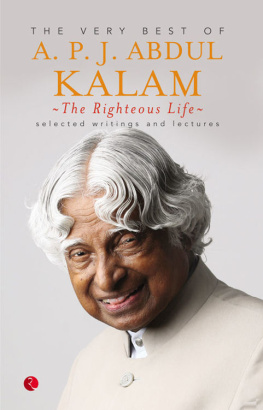
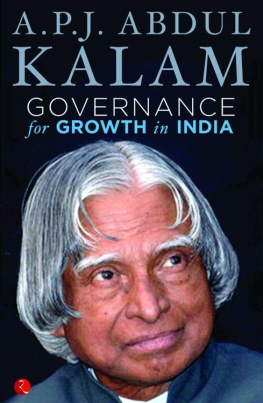
 Nuclear capability, self-sufficiency in food production, an array of indigenous satellites and missiles, an unmanned Moon missionIndias achievements in the scientific domain in recent years have been spectacular. But, according to the countrys best-known scientist A.P.J. Abdul Kalam and his close associate Y.S. Rajan, weve only just begun. In a century that many experts predict may belong to India, the realization of the vision of a better future for everyone will require a keen understanding of our needs and this can only be achieved by tailoring our research and innovations to the goal of national development.
Nuclear capability, self-sufficiency in food production, an array of indigenous satellites and missiles, an unmanned Moon missionIndias achievements in the scientific domain in recent years have been spectacular. But, according to the countrys best-known scientist A.P.J. Abdul Kalam and his close associate Y.S. Rajan, weve only just begun. In a century that many experts predict may belong to India, the realization of the vision of a better future for everyone will require a keen understanding of our needs and this can only be achieved by tailoring our research and innovations to the goal of national development.

